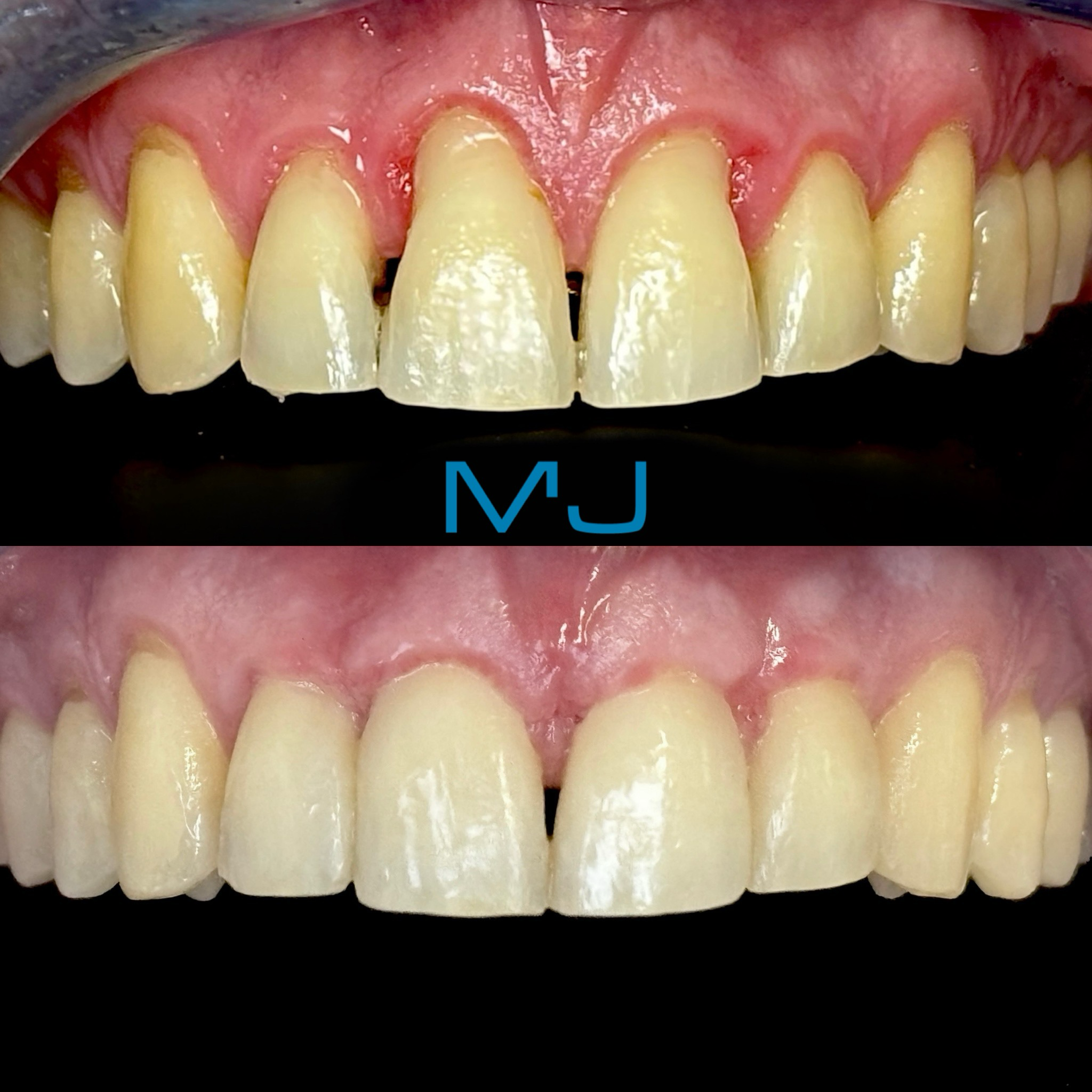Information on Treatments for Receding Gums, Exposed Tooth Necks, or Tissue Optimization After Implant Placement

Healthy gum tissue plays a key role in both the function and appearance of your teeth. It protects sensitive structures, provides stability, and contributes significantly to a balanced smile. When the gums recede or become uneven, it may lead to sensitivity, aesthetic changes, and difficulties in daily oral hygiene.
Gum tissue correction procedures can, in selected cases, help support natural structures and contribute to long-term stability.
Gum recession can uncover the tooth roots, causing temperature sensitivity or discomfort. The teeth may appear longer, which some patients find aesthetically disturbing.
Possible causes include:
Periodontal disease
Incorrect or overly forceful brushing technique
Genetic predisposition
Tooth misalignment
Thin gingival biotype
Clenching or grinding habits
In certain cases, it may be useful to strengthen or contour the soft tissue around implants to:
Improve daily cleaning
Enhance tissue resilience
Create a natural transition between implant crown and gum
The treatment approach depends on your individual situation. Common techniques include:
Minimally invasive microsurgical procedures for precise contouring
Soft-tissue augmentation using your own tissue to reinforce delicate areas
Coverage of exposed roots to protect the tooth and facilitate hygiene
Contour optimization after periodontal or implant procedures
Before any treatment, all options, potential benefits, and limitations are thoroughly explained. As with any medical procedure, no specific outcome can be guaranteed.

Why gum health plays a major role in maintaining a naturally youthful dental appearance
Age-related changes do not affect only the teeth themselves. Gum recession is also common and may lead to:
Longer-looking teeth
Visible root surfaces
A smile that appears older or less harmonious
Increased sensitivity
Higher susceptibility to wear or root caries
Gum tissue correction can help counteract some of these changes by:
Restoring a more natural gum line
Supporting sensitive areas
Improving the visual proportions between teeth and gums
Contributing to better long-term soft-tissue stability
This is often described as an “anti-tooth-aging” effect. It does not refer to a cosmetic rejuvenation promise but rather to the supportive role that healthy gum tissue can play in maintaining a stable and naturally balanced appearance.

A comprehensive examination of your gum type, oral hygiene, and individual risk factors
A transparent explanation of possible treatment paths, including advantages and limitations
A personalized, medically guided approach
An informed assessment of whether a gum correction procedure may be suitable for your specific situation
Only a personal examination can determine whether a gum tissue correction is appropriate for your needs. During a consultation, all questions, expectations, alternative approaches, and potential risks will be discussed thoroughly and clearly.